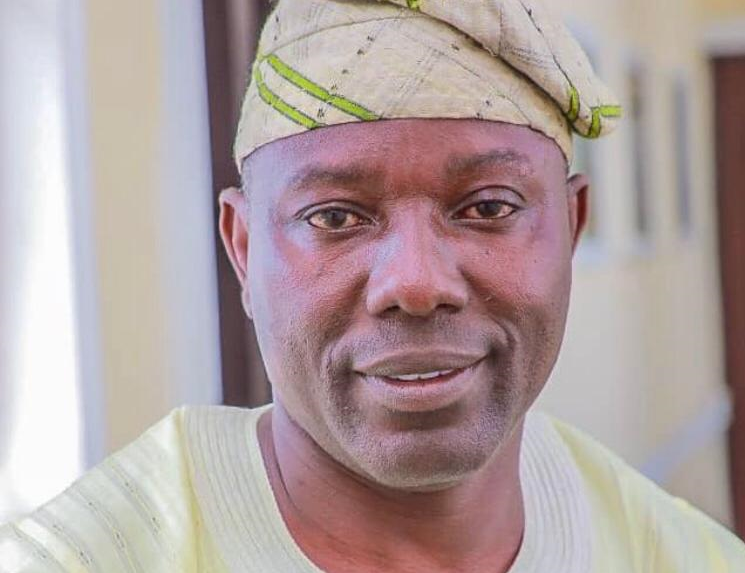In this interview, Dr Adebisi Obawale, the Osun State Commissioner for Culture and Tourism, speaks on the state’s huge tourism potential, ability to boost internally generated revenue, create thousands of jobs across local communities, partnership with Sterling Bank and the implementation of Osun Sterling Tourism Vision 30 – 30, among other issues.
Osun, perceived to be an agrarian economy, is in the news for embarking on a private sector driven tourism intervention. Why tourism and not agriculture?
I agree with you. We have land for agriculture and our economy is largely agrarian.
At the same time, we are blessed with other things.
- Farm Centre: Kano’s GSM Village Where Youths Are Changing Narratives
- Why Nigeria’s Ginger Output Is Low
Our peculiar endowment in Osun State is the gift of nature which we are converting into advantage for the state and her people.
To accelerate economic growth and development in the state, the state governor, Mr. Gboyega Oyetola, in his own wisdom, seeks to drive the economy through three key sectors, including tourism, agriculture and mining.
His vision is hinged on the abundance of arable land for agriculture, solid mineral deposits and iconic sites that can attract local and international tourists.
For instance, Owala Dam, Olumirin Waterfall and Ayinkunnugba Waterfall have huge ecotourism potentials. They are natural heritages of the people of Osun.
Apart from these natural wonders, we have other sites that will also be transformed into sought after destinations, courtesy of the Osun Sterling Tourism Vision (OSTOV) 30 -30.
OSTOV 30–30 is the short-term agenda of the state government put in place to lay a solid foundation for the perfect growth of tourism.
In addition, we have a masterplan with the title of ‘Culture and Tourism for Sustainable Economy’ (CUTOSEC).
It is the long-term plan that will build on the achievements of the OSTOV 30-30 for the permanent development of tourism.
We are working with private sector partners, led by Sterling Bank Plc as our financial advisor and investor.
Other partners include La Campagne Tropicana, Goge Africa and Economic, Social and Cultural Council (ECOSUC) of the African Union.
Working with our private sector partners, we hope to deliver 30 projects, covering tourist sites development as well as programmes and activities that should attract about five million visitors to Osun by 2021.
This will create thousands of jobs, diversify government revenue, and accelerate the state’s economic growth and development.
What steps are being taken to make Osun’s dream of becoming a tourism hub a reality?
We have launched two initiatives: the OSTOV 30–30 and CUTOSEC to harness our immense tourism potential.
The cultural and tourism policies in the two initiatives will lead us to the promised land.
They will drive inflow of additional private sector investments across our tourism value chain.
Before now, Sterling Bank had set aside funds to support development of important sites – nothing less than 21 critical areas will benefit and be developed.
We are working on areas that we can quickly develop or fix. These include transforming existing destinations or opening new sites.
These are goals that must be achieved a year from now. Once we achieve these set goals for the first year as planned, investor confidence will be further boosted.
This will lead to rapid growth and development of our tourism value chain in Osun State.
We are committed to promoting sustainable tourism practices that will foster growth and innovation in Osun through cultural and tourism policies which will standardise processes and practices, thereby guaranteeing and safeguarding investments.
Our policy thrust adopts a multi-stakeholder approach which will also ensure involvement of local communities in tourism activities in their domains so that increased socio-economic benefits can be generated as it relates to employment, creating opportunities for local businesses and preserving their local heritage and culture.
Are you not concerned that COVID-19 might pose a challenge to the state’s tourism ambition in view of the lull it has created in the global tourism sector?
Living with COVID-19 is becoming the new normal. In the wake of the pandemic, things were quite dreadful, such that we could not go out.
But today, COVID-19 is being managed through well-established safety protocols.
People are now leaving their homes to go to work. Travel restrictions have also been lifted except for countries experiencing a second wave.
In Osun, we are driven to rise above the COVID-19 constraint. We are committed to moving the state forward despite COVID-19.
We cannot rest on our oars waiting for COVID-19 to go away before executing beneficial blueprints.
Against this backdrop, we are opening ourselves for investment and convincing our people that with or without COVID-19, we are moving forward.
So, we begin with what we can do now without jeopardising the health of our people.
We have projects planned that must be achieved as the world gets used to this new normal.
About six sites are being developed with great activities built in to promote tourism and culture.
By our projection, we will have a fantastic tourism season in the next nine months.
Do you think Osun has the capacity to accommodate the projected influx of tourists?
Tourism has a multiplier effect. Influx of tourists will encourage major players in the tourism value chain to set up shops across the state.
This increase in output will encourage those that are already in business to increase capacity to meet higher demand.
Higher demand simply means extra spending which will benefit and raise household incomes in our local communities.
We are of the opinion that the multiplier effect would be huge.
It is certain that others, and by that I meant private sector players with interest in hospitality, will come and build what is required to make tourists comfortable.
We are certain that what we are doing will bring influx of investors into so many areas that you cannot imagine now.
At the end of the day, our long-term goal that should take about four to five years can be realised in two years.
That is why we are testing the market with a short-term goal and our commitment to that one is genuine.
We are about achieving our short-term goals which will boost inflow of investments that will meet the anticipated surge in tourists’ visitation to the state.
Everywhere tourism has thrived, there is always a strong private sector content and participation. Who are your private sector partners that will ensure sustainability?
Interestingly, our tourism development masterplan does not lean on government.
It was developed with the private sector in mind as the key driver.
It is Public-Private Partnership (PPP) oriented, to the extent that much of the work will be done by the private sector.
Our role and commitment are to create basic infrastructure and the enabling environment to harness the efficiency and creativity of the private sector.
This is core to our broad strategy of facilitating tourist access, enhancing quality and efficiency, and improving the destination experiences for tourists.
We will rather focus on creating an enabling environment, provision of basic infrastructure that would help the private sector bring in its creativity to bear across the spectrum of activities that include natural and heritage sites, historical artifacts, natural and thematic parks, museums, hotels, entertainment events and transportation, among others.
Who are the partners and investors that you are working with?
Well, we are working with Sterling Bank and we are happy with their commitment to tourism development in Osun.
The bank has collaborated with the Osun State Government to cause a paradigm shift.
And I am particularly excited because this is a first. We see other states adopting the Osun/Sterling blueprint for tourism development in their domains.
Apart from Sterling Bank, we have Goge Africa, La Campagne Tropicana and the Economic, Social and Cultural Council of the African Union as partners.
They are all on board and are our development partners.
There are a lot of like-minded private sector players that are working with us, with many others indicating interest.
For example, we are talking to an investor about introducing motorsport, same for players in real estate, hospitality, and allied sectors.
The Osun-Osogbo Sacred Grove is one of the last sacred forests in the world. What is the state government doing to promote this attraction to domestic and international tourists?
Let me say this, we intend to cash in on the popularity of the Osun-Osogbo Sacred Grove as well as the festival to attract tourists.
Part of our vision is to conduct an annual pilgrimage called Karele Oodua. The pilgrimage is being built around the Osun festival.
We want to bring people from the diaspora to come and see what we are doing here and to learn more about our culture and tradition.
Let me add that no development can take place in the grove because it is a UNESCO World Heritage Centre.
We cannot touch anything there. But, by and large, our approach is to create programmes, activities and festivals around the Osun-Osogbo Sacred Grove and the Osun-Osogbo Festival.
What excites you about the future of tourism in Osun state?
To start with, it is the launch of our tourism development vision and masterplan with solid private sector support in terms of funding and immediate interest in destination development.
It is a source of huge excitement for me because we have a huge project on our hands – a project that will transform the state and change the lives of hundreds of thousands of people.
Next is the opportunity it affords us to protect and preserve the immense gifts of nature in Osun for generations to come.
For instance, Iginla is a very rare tree. It is the tallest tree around here and I think we have only one in Nigeria. I stand to be corrected anyway.
The agro tourism potential of Iginla is immense and we are converting that to our advantage by building a biological garden around it.
Lastly, things are moving fast. Enquiries are pouring in which indicate that the players in the private sector have faith and have bought into our vision and masterplan.
This is indeed motivating because we started small and are moving forward very fast.

 Join Daily Trust WhatsApp Community For Quick Access To News and Happenings Around You.
Join Daily Trust WhatsApp Community For Quick Access To News and Happenings Around You.


